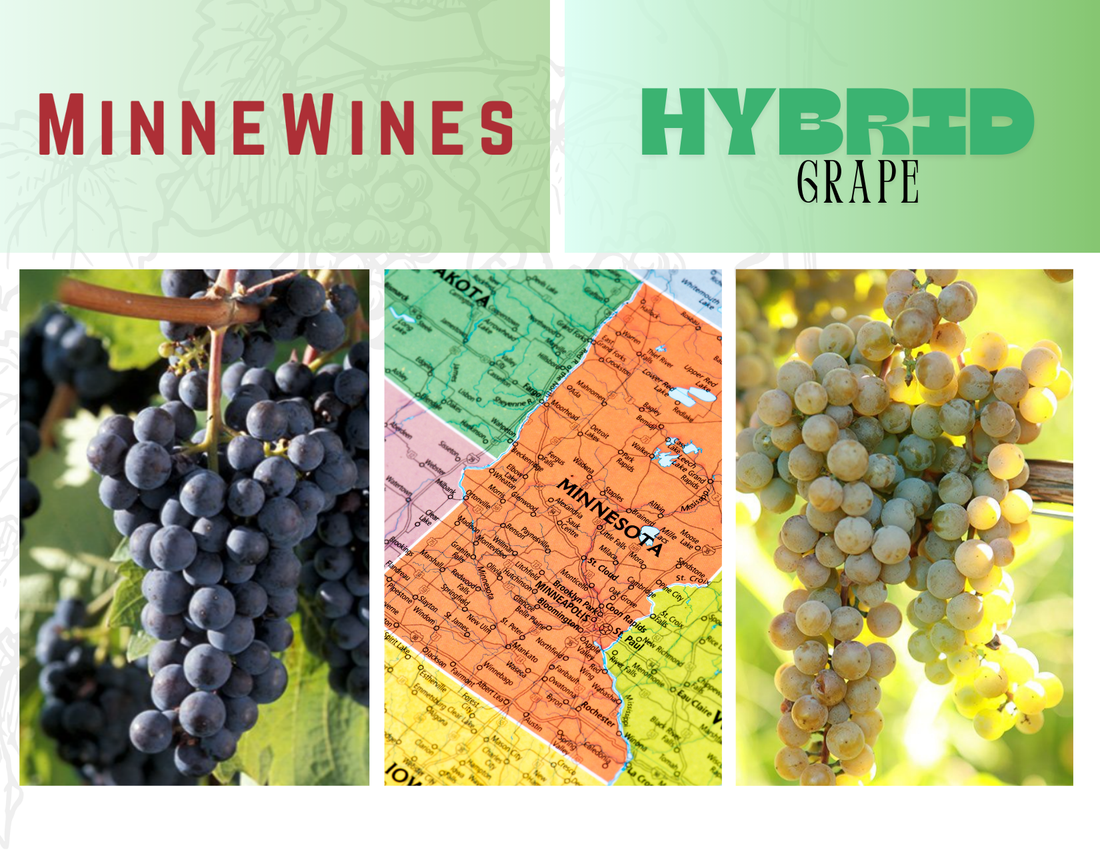
What Is a Hybrid Grape? Differences from Traditional Grapes (Vitis vinifera)
When we talk about wine, many people immediately think of classic varieties like Cabernet Sauvignon, Chardonnay, or Merlot. All of these belong to the species Vitis vinifera, the traditional vine native to famous wine regions such as France, Italy, or California.
However, in regions with extreme climates, like Minnesota, hybrid grapes have been essential in making quality wine production possible.
Today, I’ll explain what hybrid grapes are, how they differ from traditional ones, and why they are so important for the future of wine in colder regions.
What Is a Hybrid Grape?
A hybrid grape is the result of a controlled cross between different grapevine species.
While Vitis vinifera originates from Europe and Asia, other species like Vitis riparia and Vitis labrusca are native to North America.
Hybrids combine the best characteristics of both: the winemaking quality of vinifera and the natural resistance of American vines to extreme conditions like cold, humidity, and disease.
These varieties are not genetically modified organisms (GMOs); they are developed through traditional breeding methods by manually selecting plants with desirable traits.
Differences Between Hybrid Grapes and Traditional Grapes (Vitis vinifera)
| Characteristic | Traditional Grapes (Vitis vinifera) | Hybrid Grapes |
|---|---|---|
| Origin | Europe and Asia | Crosses between American and European species |
| Climate Resistance | Sensitive to frost and humidity | Highly resistant to extreme cold and diseases |
| Flavor Profile | Subtle, complex, structured | Fruity, vibrant, sometimes more acidic or fresh |
| Vineyard Management | Requires more chemical treatments | Needs less chemical intervention |
| Adaptability | Temperate and Mediterranean zones | Cold and continental climates |
| Examples | Cabernet Sauvignon, Pinot Noir, Riesling | Frontenac, La Crescent, Marquette, Itasca |
Why Are Hybrid Grapes Important in Minnesota?
Minnesota’s climate presents extreme challenges: long winters with temperatures dropping below -30°C, short summers, and disease risks from humidity.
In this context, Vitis vinifera varieties simply cannot survive without significant protection.
Thanks to hybrid grapes developed through programs like the one at the University of Minnesota, the state has been able to build a thriving wine industry, creating unique, high-quality wines.
Some key varieties include:
- Frontenac: red, known for its bold fruit character.
- La Crescent: white, aromatic and floral.
- Marquette: red, structured and elegant.
- Itasca: white, crisp, ideal for dry wines.
These grapes allow winemakers to craft wines that express the true terroir of Minnesota without sacrificing quality—and they are even beginning to win national and international awards.
Hybrid grapes are much more than an alternative: they represent innovation, sustainability, and adaptability. In places like Minnesota, they have opened the door to a new generation of authentic and exciting wines, capable of thriving against nature’s toughest challenges while offering fresh experiences to wine lovers.
Next time you enjoy a glass of Minnesota wine, remember: behind every sip lies decades of research, passion, and the power of resilience.
